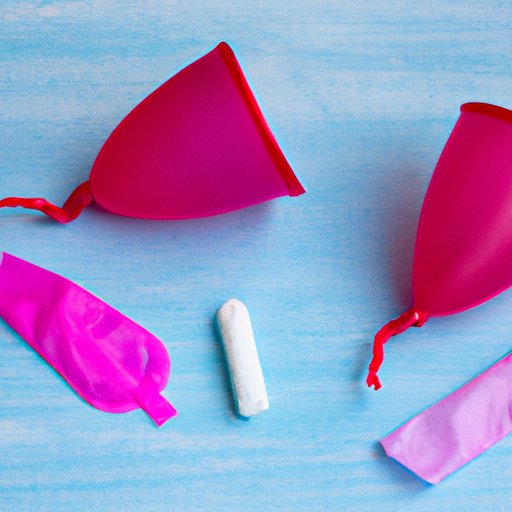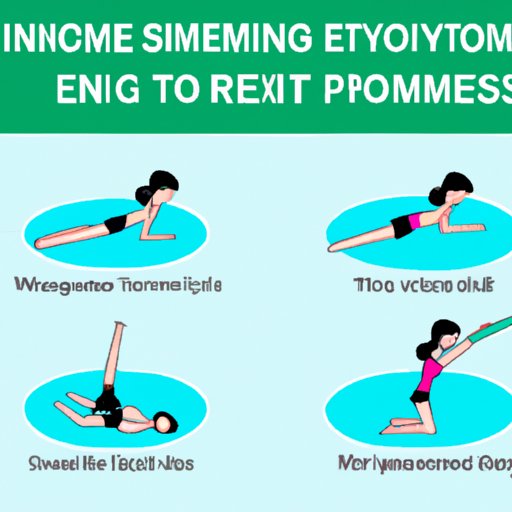
Introduction
Menstruation has long been a taboo subject, but the reality is that nearly half of the world’s population experiences it. Despite its prevalence, the stigma surrounding menstruation can make it difficult for women to discuss, let alone partake in activities they enjoy like swimming. In this section, we’ll talk about why it’s important to have conversations about menstruation and swimming, and why it’s time to break the taboo.
Myth or Fact: Swimming During Your Period
One of the most common misconceptions about menstruation is that swimming during your period is unsafe. Many people worry about leakage, increased risk of infection, or even the potential to attract sharks or other dangerous sea creatures. However, these fears are largely unfounded. Swimming, even during menstruation, is safe for most women. The important thing is to use the right menstrual products and take precautions to minimize any risks.
Experts agree that there is no medical reason to avoid swimming during your period. Women who use tampons, menstrual cups, or period-proof swimwear can swim with confidence. However, it’s important to note that some municipal pools require the use of tampons or menstrual products designed for swimming while in the water.
The Best Menstrual Products for Swimming
There are several menstrual products that are designed for swimming, including tampons, menstrual cups, and period-proof swimwear. While all products can effectively prevent leakage, there are pros and cons to each option.
Tampons: Tampons are the most common menstrual product for swimmers. They are inserted into the vagina and sit inside to absorb menstrual flow. Tampons are discreet and comfortable, but they require regular changing to prevent leakage. They also carry a small risk of toxic shock syndrome (TSS), a rare but potentially life-threatening bacterial infection.
Menstrual cups: Menstrual cups are an eco-friendly and reusable alternative to tampons. They are inserted into the vagina to collect menstrual flow and can be left in for up to 12 hours. Menstrual cups have a steep learning curve and can take some getting used to, but they offer more capacity than tampons, making them a great option for heavy flow days.
Period-proof swimwear: Period-proof swimwear is a relatively new option for women that eliminates the need for a menstrual product. These swimsuits are made with absorbent and leak-proof material, ensuring that no menstrual blood will escape into the water. They are also reusable, making them environmentally friendly. However, period-proof swimwear can be expensive and may not fit all body types comfortably.
Tips for Swimming Comfortably on Your Period
Swimming during menstruation can be a great way to ease cramps, but that doesn’t mean it comes without its challenges. Here are some tips for swimming comfortably on your period:
- Change your menstrual product right before swimming
- Wear a dark-colored swimsuit to conceal any stains or leaks
- Carry additional menstrual products with you in case of an emergency
- Take a shower or washcloth to wipe off any excess blood after swimming

Exercises to Try During Your Period Instead of Swimming
While swimming is a great option for exercise during your period, there are other options that may be more comfortable or accessible. Low-impact cardio and yoga are both great options that allow you to stay active while minimizing cramps and discomfort.
Yoga: Yoga is a low-impact exercise that can help reduce bloating and cramping. Certain poses like child’s pose and pigeon pose are especially helpful for releasing tension and reducing discomfort.
Low-impact cardio: Walking, jogging, and cycling are all great options for low-impact cardio during your period. These exercises can increase blood flow and reduce cramps without excessive strain.
The Science Behind Swimming During Your Period
While swimming is generally considered safe during menstruation, there are some risks to be aware of. One potential concern is the risk of infection. The vagina is naturally acidic, which helps prevent harmful bacteria from proliferating, but water can disrupt this balance, leading to infections like bacterial vaginosis or yeast infections. To minimize this risk, it’s important to change your menstrual product before and after swimming and avoid lingering in wet swimsuits.
Another concern is the effect of water pressure on menstrual flow. Studies have shown that diving or other activities that create pressure changes can cause menstrual blood to flow backwards into the uterus. However, the risk of this happening during normal swimming is quite low.
Pool Politics: Discussing Menstruation with Your Swim Group
Despite the prevalence of menstruation, it can still be a sensitive or uncomfortable topic to discuss with others. However, if you’re part of a swim group or regularly swim with others, it’s important to have open and honest conversations about periods. This can help reduce the stigma and make it easier for other women to feel comfortable swimming during their periods.
If you’re not sure how to bring up the topic of menstruation with your swim group, consider approaching it in a light-hearted way. You can start by introducing the topic of menstrual products or sharing a funny or relatable period story.
Menstruation and Athleticism: Breaking the Taboo
For too long, menstruation has been seen as a hindrance to athletic performance. However, new research suggests that embracing menstrual health can actually improve athletic performance and reduce the risk of injury.
Studies have shown that women who menstruate tend to underestimate their physical abilities during certain parts of their menstrual cycle. By better understanding your cycle and planning around it, you can take advantage of the times when your body is most primed for athletic performance. Additionally, regular exercise has been shown to reduce menstrual cramps and improve mood during the menstrual cycle.
Conclusion
Swimming during your period may seem daunting, but with the right information and products, it’s a safe and enjoyable activity. Tampons, menstrual cups, and period-proof swimwear are all great options that can prevent leaks and ensure a comfortable swim. Remember to change your menstrual product before and after swimming, wear dark-colored swimsuits, and maintain proper hygiene while swimming. Don’t let the taboo surrounding menstruation hold you back from doing the activities you love. By embracing menstrual health, we can break down barriers and empower women to reach their full athletic potential.




